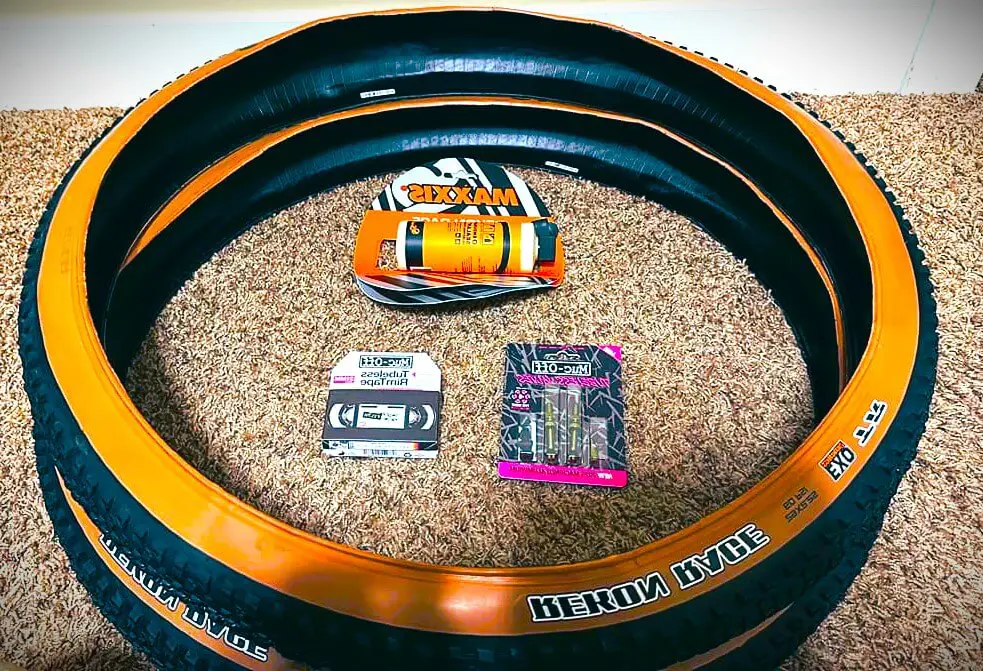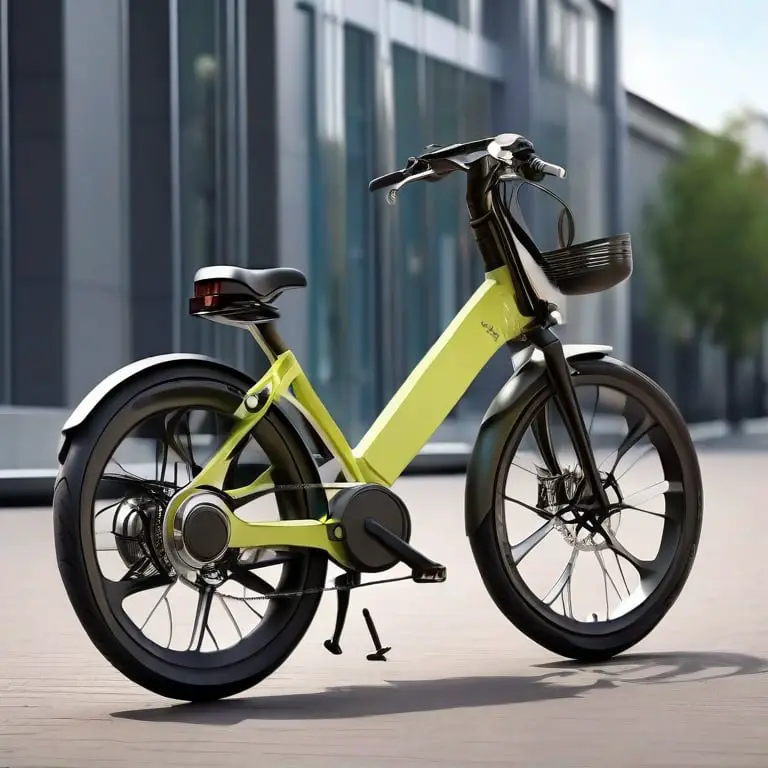10 Speed Chain on 11 Speed Cassette: Gear Up Smartly!
As an affiliate, we may earn from qualifying purchases. We get commissions for purchases made through links on this website. You can read more on our Affiliate Disclaimer here.
A 10-speed chain is generally too wide to fit an 11-speed cassette properly. The mismatch can cause shifting issues and accelerated wear.
Understanding the compatibility between different bike components is crucial for optimal performance and longevity. Bicycle drivetrains are designed with precise specifications, and using a 10-speed chain on an 11-speed cassette is not recommended. This is because the spacing between the cogs on an 11-speed cassette is narrower than that of a 10-speed.
As a result, a wider 10-speed chain may not sit correctly on the smaller cogs, leading to poor shifting and increased wear on both the chain and cassette.
Cyclists looking to maintain or upgrade their bike should always match the chain to the cassette’s speed to ensure a smooth and efficient ride. It’s essential to get the right match to avoid any mid-ride mishaps and to keep the drivetrain in good working order.
Gear Up Smartly With A 10-speed Chain
When it comes to optimizing your cycling performance, every component of your bike plays a significant role. Choosing the right chain for your cassette can mean the difference between a smooth ride and a frustrating experience.
Many cyclists wonder whether they can pair a 10-speed chain with an 11-speed cassette, a move that might offer benefits or present challenges. This intricate balancing act between gear compatibility, performance, and mixing drivetrain components needs a closer look to ensure you make the smart choice for your ride.
Compatibility Considerations Between 10-speed Chains And 11-speed Cassettes
Understanding the nuances of compatibility between chains and cassettes is pivotal. A 10-speed chain is slightly wider than an 11-speed chain, which means it may sit on the 11-speed cassette’s cogs a bit differently. This variance can affect the way gears shift and how power is transferred from your legs to the wheels of your bike.
- Chain Width: The 10-speed chain is typically
6.2mmwide, whereas the 11-speed is closer to5.5mm. - Sprocket Thickness: 11-speed cassettes have thinner sprockets to accommodate the narrower chain.
- Spacing: The gaps between the sprockets on an 11-speed are less than that of a 10-speed.
Using a 10-speed chain on an 11-speed cassette could lead to imprecise alignment and potential chain dropping, given the spacing and sprocket thickness differences.
Potential Impact On Shifting Performance
The fluidity of shifting is paramount for an efficient ride. A mismatched chain and cassette can compromise this smoothness. When a 10-speed chain is placed on an 11-speed cassette, there’s a risk of experiencing jerky shifts and misshifts.
| Aspect | 10-Speed Chain on 11-Speed Cassette |
|---|---|
| Shifting Precision | Potentially reduced due to width difference |
| Noise Level | Increased noise during shifts |
| Wear and Tear | Possible faster wear on drivetrain components |
While shifters and derailleurs can be fine-tuned, they may not fully compensate for the inherent discrepancies between the chain and cassette designs.
Benefits Of Mixing Drivetrain Components
Despite the challenges, there are reasons why cyclists might opt to mix components. One might not want to fully upgrade a drivetrain for cost savings or they may find certain combinations that offer a unique feel or performance characteristic desirable.
- Cost-Effective: Allows for gradual upgrades rather than a full system overhaul.
- Customization: Tailoring the bike’s performance to personal preferences.
- Availability: Easier to find or replace parts in some regions.
Durable 10-speed chains might be chosen for their robustness over some 11-speed options. However, these benefits should always be weighed against the potential downsides of compatibility and performance issues.
Achieving The Perfect Fit
Achieving the Perfect Fit can seem like a daunting task, especially when using a 10-speed chain on an 11-speed cassette. But fear not, as with the right adjustments and some careful tuning, you can have your bike running smoothly. Understanding the nuances between different speed components and their impact on your ride is crucial. Let’s explore how you can adjust and align everything to get that seamless gear shifting experience.
Adjusting derailleur settings for optimal functionality
Adjusting Derailleur Settings For Optimal Functionality
To maintain efficient performance and prevent any mishaps, it’s essential to properly adjust the derailleur on your bike. The derailleur is the mechanism that moves the chain from one sprocket to another, and when it comes to using a narrower 10-speed chain on a wider 11-speed cassette, precision is key. Follow these steps:
- Limits: Start by setting the high and low limit screws. These ensure the chain doesn’t shift too far and drop off the cassette.
- B-Tension: Adjust the B-tension screw to control the distance between the derailleur pulley and the sprockets for optimal chain tension.
- Cable tension: Fine-tune the cable tension to help shift gears accurately. A tighter cable can lead to shifting to a higher gear, while a looser one can cause shifting to a lower gear.
Steps for ensuring chain alignment on an 11-speed cassette
Steps For Ensuring Chain Alignment On An 11-speed Cassette
The chain must sit squarely on the cassette’s sprockets for a smooth transition between gears. Here’s how to achieve proper alignment:
- Check alignment: Inspect visually to ensure the chain aligns with the sprocket teeth.
- Rear derailleur: Make any necessary lateral adjustments by shifting into different gears and observing the movement of the chain.
- Ride test: Conduct a ride test and listen for any abnormalities in the chain’s movement or sound.
Importance of precise gear indexing
Importance Of Precise Gear Indexing
Precise gear indexing is synonymous with a bike that operates effortlessly and accurately. A well-indexed gear system will promote a fluid shift between gears without any hesitation or noise. To accomplish this:
- Inspection: Regularly inspect the gear indexing to catch any early signs of misalignment.
- Micro-adjustments: Use the barrel adjuster for micro-adjustments to perfect gear indexing.
- Consistency: Ensure each gear clicks into place with the same level of precision for a consistent riding experience.
Navigating Compatibility Issues
For cycling enthusiasts eager to maintain their bike’s performance, understanding the intricacies of drivetrain compatibility is crucial. The pressing question of whether a 10-speed chain can function on an 11-speed cassette is not just one of mere curiosity; it is a concern that affects gear shifting smoothness, drivetrain wear, and overall ride quality. This section delves into the critical aspects of using a 10-speed chain on an 11-speed cassette and provides practical advice to address compatibility issues.
Differences Between 10-speed And 11-speed Drivetrain Components
Distinguishing between 10-speed and 11-speed drivetrain components is essential to ensure optimal bike performance. These components are meticulously engineered to match specific speeds and the differences, although minute, have a substantial impact on compatibility.
- Chain width: An 11-speed chain is typically narrower than a 10-speed chain. This is to accommodate the closer spacing of the 11-speed cassette’s sprockets.
- Sprocket thickness: The individual sprockets on an 11-speed cassette are slightly thinner compared to those on a 10-speed, which allows for the additional sprocket within the same hub space.
- Shifter actuation ratio: The amount of cable pulled by the shifter differs between 10-speed and 11-speed systems, influencing the derailleur’s movement and gear changes.
Compatibility issues may arise when these components are mixed without proper consideration of their fundamental differences.
Common Pitfalls When Using A 10-speed Chain On An 11-speed System
Mixing drivetrain components from different speeds often leads to suboptimal performance. When a 10-speed chain is used on an 11-speed cassette, here are some issues that might occur:
- Improper gear shifting: Due to the wider chain on narrower sprockets, shifting may be inconsistent and noisy.
- Increased wear: The mismatch can accelerate wear on both the chain and cassette sprockets due to improper alignment.
- Chain stability issues: The wider chain might not seat securely on the thinner sprockets, which can lead to skipping or slipping under load.
Tips To Minimize Wear And Tear On Your Gears
Prolonging the life of your gears and ensuring smooth operation requires attention to detail and regular maintenance. Following these tips can help minimize wear and tear:
- Use matched components: Sticking to a single speed specification for your entire drivetrain (including chain, cassette, and shifters) is the best way to avoid compatibility issues.
- Regular cleaning and lubrication: A clean and well-lubricated chain reduces friction and prevents premature wear on drivetrain components.
- Proper adjustment: Ensure your derailleur is correctly adjusted for the width and pitch of your cassette to improve shifting performance and reduce wear.
- Quality replacement parts: When upgrading or replacing parts, choose high-quality components that are designed for your system’s specific speed to maintain peak performance.
Adhering to these tips can safeguard the integrity of your drivetrain and contribute to a more enjoyable cycling experience.
Smart Gear Ratios For Mixed Drivetrains
Embarking on the journey of tuning your bike’s drivetrain with a 10-speed chain on an 11-speed cassette isn’t just about making do; it’s about optimizing your cycling experience. This configuration might seem outside the norm, but it can yield impressive results with the right approach. Let’s delve into how to smartly select gear ratios for mixed drivetrains, to harmonize efficiency and performance on every ride.
Importance Of Choosing The Right Chainring Size
Every cyclist knows that the chainring size plays a critical role in determining how your bike reacts to each pedal stroke. A larger chainring equates to greater speed capabilities on flats but can present challenges when climbing hills. Conversely, smaller chainrings will ease pedaling on inclines but might lack the oomph when speed is a priority.
- Large Chainrings: Best for flat terrains and racing scenarios.
- Medium Chainrings: Provide a balance between speed and easiness to pedal.
- Small Chainrings: Ideal for challenging climbs and endurance rides.
How Gear Ratios Affect Cycling Efficiency
The gear ratio is the heart of your drivetrain’s performance. This pivotal value, the ratio of the number of teeth on your chainring to the number of teeth on your cassette cog, influences how hard or easy it is to pedal. A lower gear ratio means easier pedaling but less distance traveled per pedal stroke, suitable for steep terrains. On the contrary, a higher gear ratio allows for greater speeds but requires more effort, aligning with flat surfaces where you want to maintain momentum.
Your choice in gear ratio with a 10-speed chain on an 11-speed cassette can either boost your cycling efficiency or hinder it, so choose wisely based on the terrain you expect to tackle.
Strategies For Gear Selection With A Mixed Drivetrain Setup
Having a mixed drivetrain setup, such as pairing a 10-speed chain with an 11-speed cassette, requires thoughtful gear selection. Consider these strategies:
| Gear Configuration | Use Case | Benefits |
|---|---|---|
| Larger Chainring + Smaller Cog | Flat terrain, Time trials | Efficient power transfer, High-speed cycling |
| Smaller Chainring + Larger Cog | Climbing steep hills | Decreased effort per pedal, Sustained energy |
| Mid-sized Chainring + Middle Cogs | Varied terrain | Balanced efficiency, Versatility |
By understanding these strategies and how they apply to your riding style and terrain, you can make informed decisions about gearing configurations that will enhance your cycling performance and enjoyment.
Smooth Shifting Performance
Ensuring your bike delivers smooth shifting performance with mixed componentry such as a 10-speed chain on an 11-speed cassette can seem like a daunting task. Yet, with the right techniques and regular maintenance, it’s perfectly achievable. It’s all about understanding the nuances between the different components and how they interact. This section unpacks the secrets to silky gear transitions, essential maintenance habits, and advanced performance tips, thereby enabling a seamless ride even with a mismatched chain and cassette setup.
Techniques For Seamless Gear Changes With A 10-speed Chain On 11-speed
- Check Alignment: Ensure that the chain is properly aligned with the cassette sprockets for a smoother transition between gears.
- Shift Under Light Load: Change gears while pedalling gently to reduce strain on the chain and facilitate an easier gear shift.
- Proper Derailleur Adjustment: A well-adjusted derailleur makes a significant difference in shifting performance, minimizing hesitancy and skipping.
Role Of Chain Lubrication And Maintenance In Shifting Quality
Regular chain lubrication and maintenance are pivotal for preserving shift quality and longevity. A well-maintained chain ensures minimal friction and smooth interaction with the cassette’s sprockets. Here’s what cyclists should focus on:
- Clean the Chain: Remove dirt and grime buildup that can impede shifting performance.
- Lubricate Properly: Apply quality bike lubricant to the chain after cleaning, focusing on the rollers and avoiding excess.
- Consistent Inspection: Regularly inspect the chain for wear and replace it if necessary to prevent slipping and misshifting.
Advanced Tips For Avid Cyclists Seeking Optimal Performance
For cyclists aiming for the pinnacle of performance, consider these advanced tips:
| Tip | Benefit |
|---|---|
| Fine Tuning Cable Tension | Enhances the precision of shifts between gears. |
| Upgrade to Higher-Quality Chains | Invest in a chain designed for better durability and smoother shifting. |
| Utilize Chain Quick Links | Facilitates easier removal and cleaning of the chain. |
Combining these techniques with dedicated upkeep can drastically improve your cycling experience, despite the mixed gear setup. Achieving effortless shifting is possible with a clear understanding of your bike’s mechanics and diligent care.
Tuning Your Ride For Peak Efficiency
If you’re a cycling enthusiast, you know that optimizing every part of your bike can lead to a smoother and more efficient ride. When it comes to 10-speed chains on an 11-speed cassette, there’s a sweet spot that promises peak performance—if you know how to achieve it. Let’s embark on the journey of fine-tuning your drivetrain so you can pedal with power and precision.
Balancing tension and slack in the chain
Balancing Tension And Slack In The Chain
Getting the right tension in your chain is pivotal for a seamless cycling experience. A chain that’s too tight can cause excessive wear on your drivetrain components, while one that’s too loose could lead to slipping or even derailment. Here’s a step-by-step guide to find that perfect balance:
- Shift to the smallest ring at the front and the largest cog at the back.
- Check the chain’s sag—there should be a slight give, allowing for a small amount of vertical movement.
- If adjustments are needed, use the rear derailleur’s barrel adjuster to fine-tune the tension.
Fine-tuning the rear derailleur for a 10-speed chain on 11-speed cassette
Fine-tuning The Rear Derailleur For A 10-speed Chain On 11-speed Cassette
Fine-tuning your rear derailleur is imperative when running a 10-speed chain on an 11-speed cassette. This combination could cause shifting issues if not adjusted properly. Here’s how to dial it in:
- Set the correct limit screws to prevent the chain from dropping off the cassette.
- Adjust the cable tension to ensure smooth shifting between all gears.
- Test ride and shift through all gears to ensure the chain moves seamlessly from one cog to another.
Remember that a 10-speed chain can be slightly narrower than an 11-speed. Therefore, it requires a precise touch when adjusting the derailleur.
Assessing when to replace your chain for sustained performance
Assessing When To Replace Your Chain For Sustained Performance
A stretched chain leads to poor performance and causes undue strain on your cassette and chainrings. Monitor your chain for signs of wear at regular intervals. Utilize a chain-checker tool to measure chain wear—most mechanics recommend replacing your chain once you hit 0.75% stretch to maintain an efficient drivetrain. Create a maintenance schedule and stick to it for consistent performance levels.
| Chain Wear Indicator | Action Required |
|---|---|
| 0.5% | Monitor |
| 0.75% | Replace Chain |
| 1.0% | Inspect Cassette for Wear |
Frequently Asked Questions On 10-speed Chain On 11-speed Cassette
Can I Fit A 10-speed Chain On An 11-speed Cassette?
You can technically fit a 10-speed chain on an 11-speed cassette, but it’s not recommended. The chain’s width isn’t ideal for the narrower cog spacing and can lead to shifting issues and faster wear. It’s better to match the chain to the cassette speed for optimal performance.
Will A 10-speed Chain Affect Shifting On 11-speed Gears?
Using a 10-speed chain with 11-speed gears often results in unreliable shifting. The 10-speed chain is wider and can cause imprecision when engaging the narrower 11-speed sprockets. This mismatch can also contribute to accelerated component wear.
What Is The Width Difference Between 10 And 11-speed Chains?
The main difference is in width; a 10-speed chain is typically around 6. 2mm wide, while an 11-speed chain is closer to 5. 5mm. This small difference in width is significant in relation to the precise spacing of an 11-speed cassette, affecting the chain’s fit and function.
Is It Possible To Use An 11-speed Cassette With A 10-speed Drivetrain?
While an 11-speed cassette can be installed in place of a 10-speed, a full conversion requires compatible components. You would need an 11-speed chain, shifter, and derailleur to ensure proper gearing and shifting performance, as they are designed to work with the specific sprocket spacing.
Conclusion
Wrapping up, using a 10-speed chain on an 11-speed cassette can be a temporary fix. It’s a workaround that demands precision and may impact your ride.
Remember to weigh the compatibility and performance before making the switch. For the best cycling experience, matching your gear correctly is key.
Keep pedaling smoothly!

We are Louisa & Tobi aka chainsandchords, a couple from Germany, and we are currently cycling around the world with our guitars! Louisa was born and raised in Dortmund. Tobi was born in the US but grew up moving around with his family to Germany, Australia & China.




